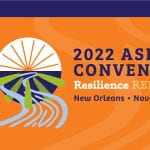 Shane, H., Laubscher, E., Sorce, J., Flynn, S., Abramson, J., Fadie, H., Schlosser, R. (September, 2017). Creating a visual immersion experience for one learner with autism. Presentation at AAC Colloquium, Penn State University, University Park, PA.
Shane, H., Laubscher, E., Sorce, J., Flynn, S., Abramson, J., Fadie, H., Schlosser, R. (September, 2017). Creating a visual immersion experience for one learner with autism. Presentation at AAC Colloquium, Penn State University, University Park, PA.
Emily Laubscher presented research on the use of customized visuals as instructional language development tools for individuals with moderate to severe ASD. A summary appears below, and the full presentation can be found here.
Individuals with moderate-severe ASD often experience significant deficits with respect to both receptive and expressive language. Visual supports have been shown to be effective as instructional tools for this population, but are typically used in practice to support only a limited range of communicative functions (e.g., requesting, labeling, understanding schedules).
Additionally:
- Visuals tend to be used in a limited variety of contexts and with a limited number of communication partners.
- Despite the increasing availability of visual supports, many individuals with moderate-severe ASD continue to struggle to make broad-based gains in language and communication skills.
This project explored the effects of a visually immersive environment on one individual with ASD who uses AAC. Customized visual supports targeting seven distinct communicative functions were created through a collaborative effort between the participant, a speech language pathologist, family, and school personnel. Visuals were implemented across multiple communication contexts (e.g., locations, activities, communication partners) throughout the participant’s day. Data were collected through observation, formal and informal interviews, surveys, and video.
Results indicate that the participant demonstrated improvement in receptive and expressive communication skills across seven communicative functions. Furthermore, caregivers reported an increase in their knowledge of and ability to implement visual supports. Challenges and areas for future research are discussed.

